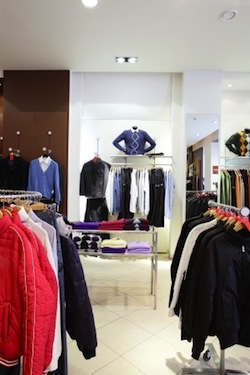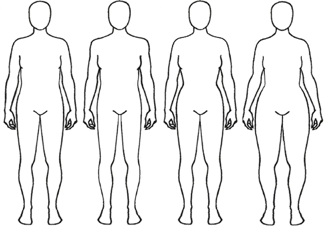Buying new school shoes can be a tricky business. Check out the handy guide for finding the best school shoes for your child in our buying new school shoes article.
Children grow out of their shoes very fast, so on a tight budget it’s often hard to justify expensive shoes, especially when similar looking versions are available for half the price. Unfortunately while these cheaper versions may ‘do the job’, they’re not necessarily providing the best environment for your child’s feet to grow and develop.
Children’s feet are in a constant state of flux, with bones, muscles and ligaments continuously changing and growing until your child is about 14 years old.
Even then, once the foot mechanics are fully developed, your child’s feet will still grow in length until they’re about 18. Caron Orelowitz, from Yourfeet.co.nz says the wrong school shoes could cause bunions, corns, calluses, blisters, clawed toes, heel pain or change the shape and function of a foot.
Children’s feet get a literal hammering as they run, jump, skip, dodge and slide, and with 26 bones, 19 muscles, and 107 ligaments in each foot, it’s no surprise they need support.
The most recommended brand by podiatrists throughout New Zealand for children’s footwear is ASICS. One of their classic features is rearfoot GEL providing maximum comfort and cushioning while absorbing shock. A removable inner sole provides an anatomical moulded support which improves the shoe fitting.
Choosing the right sized school shoe
When you’re buying shoes for your child, don’t just go by the size printed on the sole.
Make sure your child is there to try them on and, if you can, get an assistant to help you fit them correctly. It’s common for children (and adults) to have one foot bigger than the other, so give your child a chance to walk around in both shoes to try them out.
The shoes should be comfortable from the outset and you shouldn’t rely on the ‘he’ll break them in’ theory!
A child’s shoe should be 18mm longer than their foot, a little less as they become teenagers. If you’re buying shoes from a specialist shop they’ll have a gauge to get this right, but there is a way you can measure it yourself.
Simply measure your child’s foot from the heel to the longest toe before you leave home. Then cut a thin strip of card as long as your child’s foot. In the shoe store you put the card into the shoe, slowly slide the card forward until it hits the toe, then take note of the gap between the strip and the back of the shoe.
The width of the shoe is also important. Specialist shoe stores stock shoes in varying widths, so you can make sure they’re wide enough for your child’s toes to wiggle about.
Choosing appropriate footwear for school
If your child has a uniform, then the school will have already decided what shoes are appropriate.
However if your child does not have a uniform, the practicality decision is up to you. Keep in mind that the playground is an active place, even for the quietest children, and they’ll be expected to participate in all sorts of activities during the school day.
Heels (no matter how small and kitten-like) are not safe or practical, and slip-ons or jandals also make it difficult to run about. Sneakers or sports sandals are the most comfortable and practical options for growing feet.
Also consider your child’s age and stage of development.
If they can’t yet tie their own laces, then either spend some time teaching them or buy them shoes with elastic laces, velcro or buckle fasteners. Your child’s teacher may very well have the patience of a saint, but stopping to tie 27 pairs of laces every time they leave the class may be pushing the limits!
Choosing footwear that provides your child comfort and support
Getting the right support is essential for growing feet, and generally speaking the more you pay, the better you get.
Look for shoes that have a flexible sole, so that the shoe actually moves and bends with your child’s foot. The upper should also be supple, so avoid hard plastic or synthetic materials that stay rigid or crack. Synthetic materials also contribute to smelly feet, as they do not allow moisture to evaporate or escape.
The achilles heel should also be supported, so look for shoes that have a notch (or heel tab) at the back where the achilles can sit.
The developing foot has a vital growth plate in the heel bone which can be irritated by impact and cause pain known as Severs Disease. All ASICS kids shoes have a heel gradient designed to stop the stress on the Achilles by reducing the pulling on the back of the heel. The GEL Cushioning System helps absorb shock and softens repetitive forces that occur during activities.
A cushioned tongue in sneakers will help to dispense shock when jumping or running, and soft edged straps on sandals will help to avoid basic discomforts like blisters and chaffing.
If your child appears to have an unusual way of walking, have them checked out by a podiatrist or physiotherapist. They may be able to suggest specific exercises, or provide special inner soles to give your child the support they need.
ASICS have the largest range of shoes on the market to suit kids’ sports, activities and foot types. The main reason kids’ shoes need to be specific to a sport or activity is for safety, and secondly for the life of the shoe.
Durability of school shoes
I know that children grow out of shoes pretty fast, but you still want shoes that will last the distance.
Make sure that the seams are well stitched, with no gummy adhesives or bulky ends where the thread finishes. Check that any eyelets are well secured, and that the sole is firmly attached to the upper.
You can find good-quality shoes that don’t break the bank. Just remember that it’s a ‘false economy’ if you go too cheap. Replacing a cheap pair of shoes every 6 months is always going to be more expensive than buying a good-quality shoe at the outset.
For a shoe that is going to last longer look for stitched toe bumpers and solid rubber outsoles. Shoes will last through the school year and beyond with materials designed to withstand the demands of active kids. It’s important to seek out expert advice at your local specialist retail store to ensure the shoe you’re purchasing is fit for your child, and their primary activities.
What about socks?
Socks, like shoes, need to fit correctly.
Granted they’re stretchy, but they’ll only stretch so far, and ones that are too small can cause as much discomfort as ill fitting shoes.
Avoid nylon socks which can compress the foot and cause sweating, and watch out for bulky seams that can rub young feet. Cotton or woollen socks are your best option as they help to absorb perspiration and prevent chaffing.
Often spending just a few extra dollars on socks can buy you really good quality socks that last a long time.
Where can you buy school shoes and how much will they cost?
If your child has a school uniform, your school will tell you where to purchase your shoes. If you’re permitted to choose shoes within certain guidelines, then you’ll be able to find them at a wide range of stores.
Large department stores like Farmers, K-Mart and The Warehouse have children’s shoe departments, but their staff may not be trained to fit your child’s shoe correctly. Specialist department stores, like Number One Shoe Warehouse, have knowledgeable staff, and a wide range of shoes to suit. Just note the quality aspects outlined above. Specialist shoe stores, especially those found in malls such as Hannahs, The Shoe Clinic, and The Athletes Foot, have very well trained staff, and usually really good quality footwear.
Department stores
Generally speaking, shoes from a department store will be less expensive than specialist shops, but this isn’t always the case. Your best bet is to always shop around, and seek out those specials whenever you can.
Expect to pay around $100 for a good pair of primary school shoes, and more for teenagers.
Specialist shoe stores
Specialist shoe shops can help fit your child’s shoes correctly, and many provide brands that come in half sizes and various widths. Specialist stores often have a podiatrist on hand to answer any curly questions, or at the very least they’re able to refer you to one they recommend.
Shoes from a specialist store are often more expensive, but this is because you’re paying for expert advice on choosing the right shoe for your child.
Specialist shoe stores pride themselves on quality, and usually that’s what you get. At a specialist store you can expect to pay between $80 – $150 for primary school shoes and up to $190 for teenagers.
ASICS has always been focussed on helping kids feet develop in the healthiest way they can by continually developing the latest shoe technology. Check out the latest designs to help kids stay supported and get the best performance out of their footwear. From school shoes to childrens running shoes, ASICS offers the perfect pair.
For great advice on naming your new school items, including shoes, see our Labelling article.






